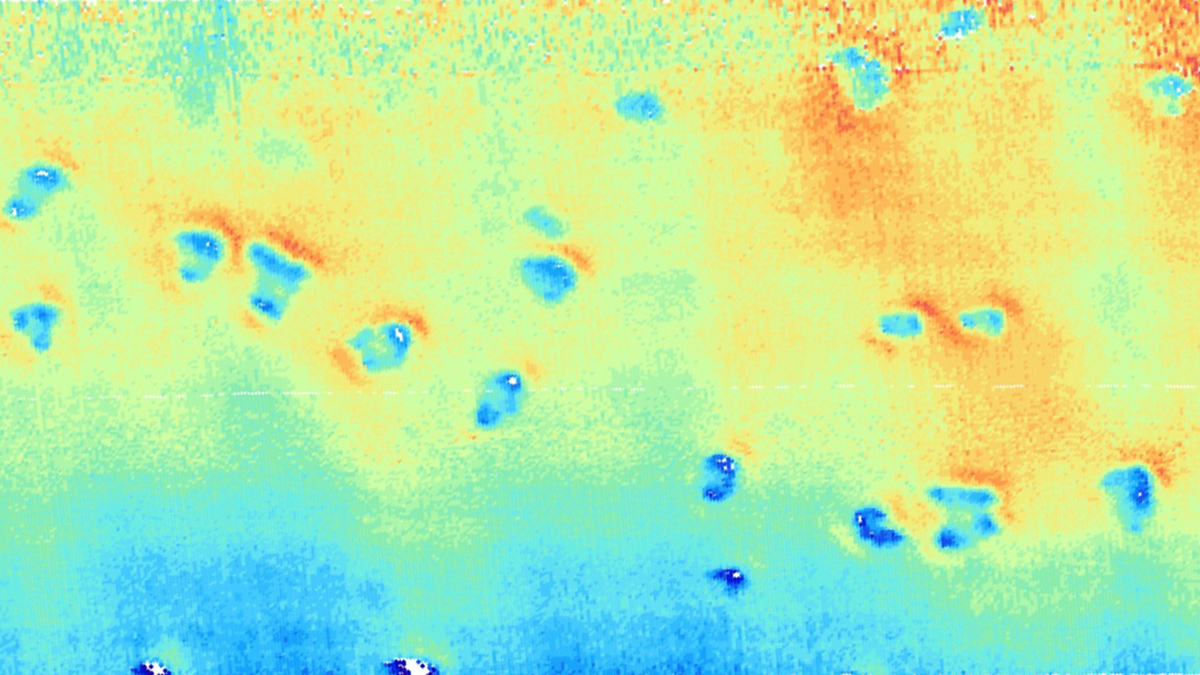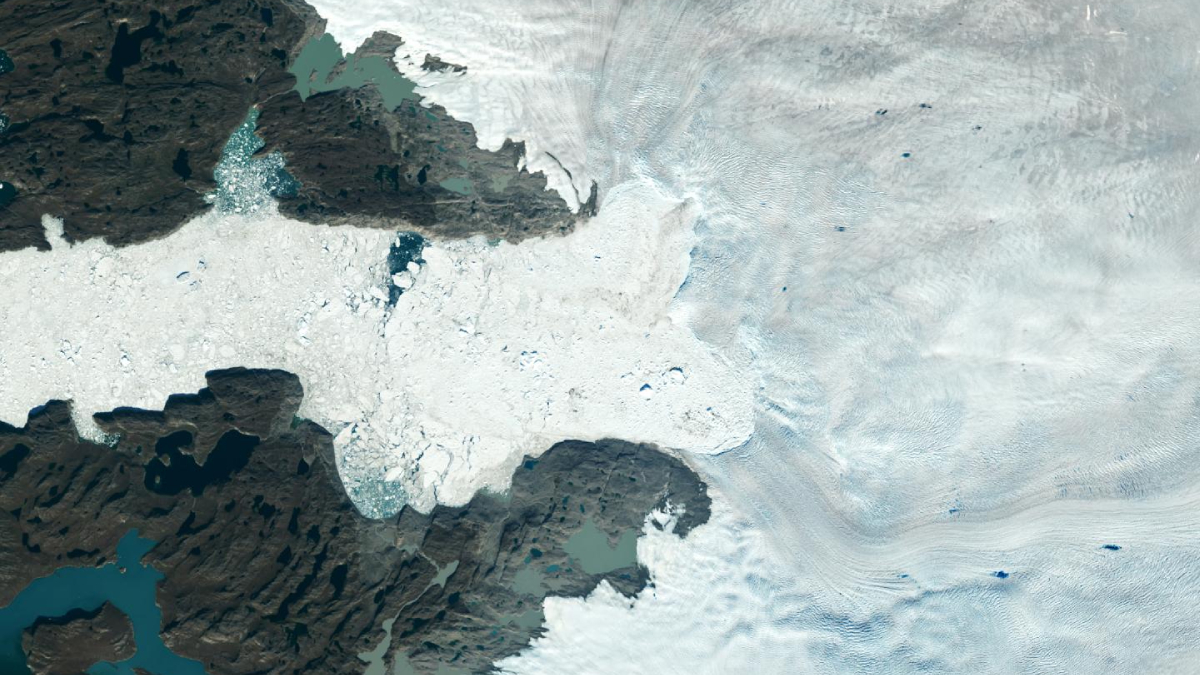The island nation’s underwater fields store huge reserves of carbon, though not as much as scientists thought.
Atlantic Ocean
A Long-Lost Tropical Island Lies Off Brazil’s Coast
An undersea volcanic plateau in the southwestern Atlantic was a tropical island 45 million years ago.
Mysterious Seafloor Pits May Be Made on Porpoise
Some shallow seafloor depressions off the coast of Germany that look like those associated with methane might instead be the work of porpoises.
How Did We Miss 20% of Greenland’s Ice Loss?
The ice loss was hidden in places existing monitoring methods can’t reach, such as hard-to-map fjords. Machine learning helped scientist revise mass loss estimates and uncover patterns in glacial retreat.
Measuring Link Between the Chemistry and Physics of the Atmosphere
A new study sheds light on the coupling between the chemical composition and the physical properties of the atmosphere.
Atlantic Hurricanes Are Intensifying Faster
Warmer waters and other factors are allowing Atlantic hurricanes to grow stronger faster.
Rift-to-Ridge: Mid-Atlantic Ridge Segments Imprinted During Rifting
A new seismic study shows that magmatism along the eastern North American rift margin was segmented, and that rift discontinuities influence formation of fracture zones along the Mid-Atlantic Ridge.
A Multidecadal View of Oceanic Storage of Anthropogenic Carbon
A decline in the ratio of ocean carbon accumulation to atmospheric carbon dioxide growth between 1994-2004 and 2004-2014 suggests a reduction in the sensitivity of the ocean carbon sink.
Outlook: Normal Atlantic Hurricane Season Expected
Atmospheric and oceanic features are simultaneously strengthening and suppressing hurricane activity this year.
New Theory Explains Radiative Cooling of the Lower Atmosphere
The shape of radiative cooling in lower atmosphere is controlled by the lapse rate in the water vapor path according to a new theory and observations from subsidence regimes in the tropical Atlantic.










